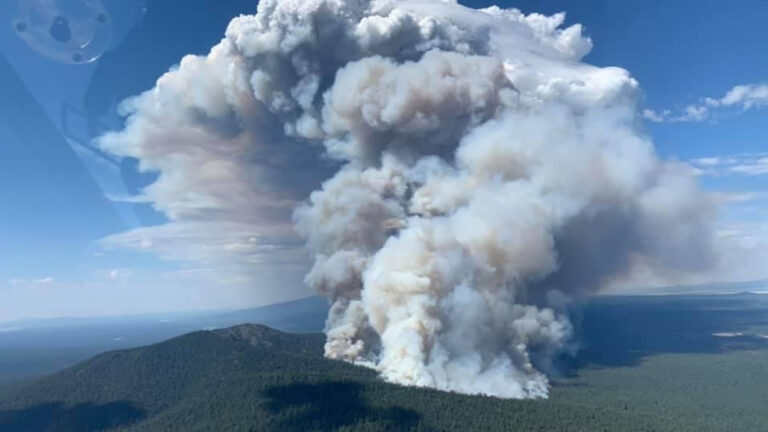The Biden-Harris Administration has invested US$34m for NOAA fire weather research through the Investing in America agenda.
The Department of Commerce and NOAA have awarded more than US$34m to reduce the risk to Americans’ lives and property from wildfires. This funding will be provided over five years to six research universities in NOAA’s Cooperative Institute system to support wildfire preparedness and response as part of President Biden’s Investing in America agenda under the Bipartisan Infrastructure Law. The overarching goal is to improve the understanding and modeling of wildfire behavior and integrate that into weather forecasting and wildfire warnings.
Knowledge and tools generated from this funding will help NOAA build and deploy new observing systems that detect and monitor wildfires and their impacts, as well as to advance high-resolution models to predict fires, emissions and air quality. The funding will also establish a new NOAA Fire Weather Testbed that will enable scientists and forecasters to evaluate experimental products and speed their transition to operations.
During active wildfires, NOAA deploys specially trained and certified weather forecasters, called incident meteorologists (IMETs), to provide emergency support at fire locations. IMETs keep firefighters safe by interpreting weather information, assessing its effect on the fire and communicating findings to fire crews. Once on-site, IMETs become key members of the incident command teams and provide continuous meteorological support for the duration of the incident. The research sponsored by the awards will be targeted to improve IMETs’ and other forecasters’ ability to protect Americans’ lives and property.
“Americans are increasingly at risk from the threat of wildfires,” said Secretary of Commerce Gina Raimondo. “NOAA’s observations, models, outlooks and forecasts are essential for supporting wildfire response across America. As part of President Biden’s Investing in America agenda, this funding will help increase lead times for fire weather warnings, speed detection of fire starts and provide more real-time actionable information to prevent wildfires, support firefighting crews and keep communities safe.”
“Rising temperatures, declining snowpack and frequent droughts are all leading to a dramatic surge in wildfire frequency and severity across the United States,” said NOAA Administrator Rick Spinrad, PhD. “These investments will help NOAA scientists develop new tools, technologies and systems to improve the accuracy of outlooks and forecasts for our land management and wildfire response partners, assist local officials’ decision making and communicate vital public safety information to more people more quickly.”
To address these needs, NOAA has developed a comprehensive approach to its wildfire research. It has been developing early detection and forecast tools, including satellite-based fire detection systems that send alerts as soon as a fire starts, improving high-resolution weather models to identify rapidly changing weather situations and predict smoke transportation and providing real-time analysis to accurately predict how weather will influence fire behavior.
Alongside this, it is accelerating the development of tools that improve delivery of fire-related information and services, making the information easier to access by more people than ever before. Furthermore, it is providing National Weather Service incident meteorologists – who are dispatched to the fireline to deliver critical, short-term, hyperlocal fire weather forecasts – new systems and technologies that use enhanced data, visualization tools and up-to-date weather information that can help keep firefighters safe.
Leading these projects are NOAA’s Global Systems Laboratory, Physical Sciences Laboratory, Chemical Sciences Laboratory and Global Monitoring Laboratory in Boulder, Colorado, and the National Weather Service’s Meteorological Development Laboratory in Silver Spring, Maryland. Several other projects will be led by NOAA’s National Environmental Satellite, Data, and Information Service, also in Silver Spring, and the National Weather Service’s Storm Prediction Center in Norman, Oklahoma.
For more of the top insights into fire weather research, read Meteorological Technology International’s exclusive feature “How are drones, satellites and AI models working together to predict fires and save lives?”, here.



